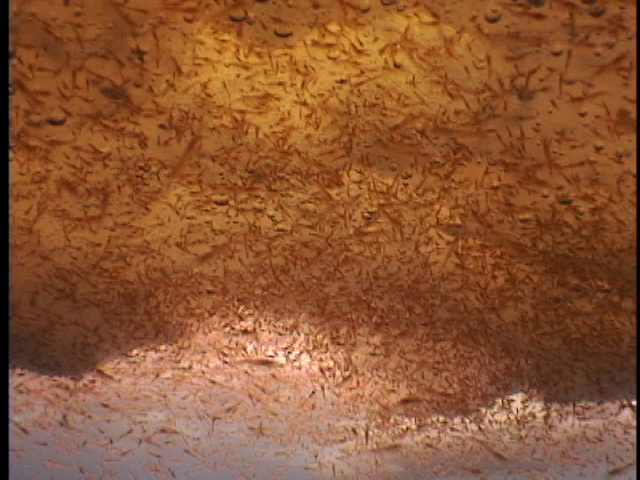
Dr Emma Cavan is a Fellow in the Department of Life Sciences at Silwood Park. Her research focuses on the vital role that Antarctic krill (small ocean crustaceans) play in biogeochemical cycles (where biological, geological and chemical aspects of a natural cycle are considered).
Emma will be heading to Glasgow, taking the case for krill to the COP26 climate conference this year as part of Imperial’s delegation. As well as taking the opportunity to share her research and hear from other delegates, she’ll attend the release of a World Wildlife Fund (WWF) short animation, which explains the connection between krill and sinking carbon. She was involved behind-the-scenes in the making of the animation as an advisor, and looks forward to presenting her field of research to UN delegates via this creative collaboration. Plus, she’s on a panel at an event outside of the main COP on climate action and fishing, with the NGO Our Fish.
On the eve of travelling to the conference, Emma reflects on why protecting natural carbon sinks is so important as part of our efforts to tackle carbon emissions, how her research has evolved since publishing this paper back in 2019 and her hopes for COP’s impact at this critical juncture, as humans try to mitigate and adapt to the climate crisis.
By Dr Emma Cavan. Edited by Claudia Cannon.
How krill poo can help us fight climate change
The climate change conversation has been on the agenda for a long, long time, but this year it’s become hard to avoid – not only because it’s all over the news, but also because of its catastrophic effects across the globe. People sometimes find it surprising how natural processes that have occurred for millennia, such as the krill life cycle, can help in our fight against the climate crisis in intricate and unexpected ways.
A huge task ahead of us is how to take carbon out of the atmosphere and maintain atmospheric carbon dioxide levels – in fact, krill and their poo can play their part! Krill poo pellets are large, carbon-rich (because krill eat microscopic plants in the ocean that perform photosynthesis) and sink quickly to the deep ocean, locking carbon away from the atmosphere for long periods of time. There are so many reasons why krill are incredible and vital. Natural ecosystems like this are a great example of how nature-based solutions can help us fight climate change, but they can only help if they themselves are protected.
Where does the research go from here?
Since publishing a paper on the importance of krill in biogeochemical cycles two years ago, my research has developed to look in more detail at how fisheries are interfering with the carbon sink cycle. By harvesting animals that sink carbon, such as krill or fish, fisheries could be reducing the carbon stored in the deep oceans. The complexity of biology and intricate ecosystems, however, means that we can’t be certain that simply by removing krill through fishing there will be less sinking carbon; indeed, carbon might be able to sink as successfully through other available routes, such as via dead phytoplankton (algae) cells or salps. A decline in krill might also lead to an increase in phytoplankton (marine plants), which are themselves important for transporting carbon to the sea floor.

Krill migrate vertically through the water column, and we know that they can quickly move carbon to the deep, but we don’t know exactly how this happens. Are krill at the surface in the day, or the night? Do they release pellets at surface or depth? Do they respire less carbon dioxide at depth because it’s colder? We know from other studies that the pellet sink is high where there is sea-ice, possibly due to krill larvae and juveniles that live there, but this isn’t confirmed, and because the Southern Ocean is rarely sampled in winter then the contribution of krill to sinking carbon in winter is not known.
Much more research is becoming available about how animals interact with the oceans, including how they fertilise them. Whales, for example, seem to be particularly important in local nutrient fertilisation through their faeces. Before we get to impacting fisheries management, we need more information, such as: if ‘x’ number of krill are fished then the impact on carbon sink is ‘y’, so keep krill fishing below ‘z’, but we just do not have those numbers available. It’s a really new topic of research, and there’s need now to work more closely with fisheries to better understand how their practices influence ocean health. There’s so much more to learn – watch this space for more krill research!
Two complex and interlinked crises: climate and biodiversity
It certainly does seem to have taken a while for the biodiversity story to get the same attention as climate change, even though they’re linked in many ways. There are many things that feed into mitigating both the climate and biodiversity crises – on a small-scale individual level as well as on the global political and industrial stages. We need to make ‘green’ lifestyles affordable, and to stop conglomerate companies from causing so much pollution.

Although my research isn’t directly involved in analysing the sustainability of the fishing industry, through my connection to the NGO Our Fish I’ve seen research that shows how polluting fishery vessels are. Certainly, more could be done – industrial fishing is incredibly detrimental to the environment – but like so many other areas the picture is complex. As well as incentives, the switch to greener solutions needs to be affordable for the people on the ground. Just as people might not be able to afford to buy and run electric cars, there might be barriers that prevent individual fishers from fishing ‘greener’.
Taking the case for krill to COP
COP is the place where the international governmental community comes to agree on – among other things – emissions targets that all counties will try to reach. It’s vital for life on Earth that we stay within a 1.5 degree global warming limit – but at the rate we’re going, we’re already set to surpass that, and the consequences could be catastrophic. Though it’s incredibly useful that COP sets the target, it is really then up to governments and industries to force a reduction in carbon dioxide emissions by their policy decisions and actions.
I have always wanted to go to COP and couldn’t miss this opportunity whilst it’s in the UK. It’s a real privilege to be able to witness critical negotiations that will take place. As a scientist I want to use the opportunity to raise awareness of my research, and maybe even get the chance to speak to some UN delegates about the critical importance of natural carbon sinks, biodiversity and saving the ocean. One of the biggest issues which prevents policy from using science is the timeframe; science takes years to go from idea to a published paper, but policy needs information now. By bringing us together COP provides a uniquely valuable environment for us all to share our expertise and be able to to mix, not only with academics, but also with NGOs, policy makers, industry representatives and people from all over the world that will be there.
As a two-week global political event COP also gets a lot of coverage – especially this year – which gets the public thinking about climate change and understanding its severity, plus there are many opportunities for schools and charities to get involved too. Hopefully social media will be full of reflections and information that showcases how much understanding there is about the crisis we face, and how strongly people feel about it. It will also hopefully give industry guidelines on reducing emissions and improving sustainability, whilst also showcasing technology that might help us achieve this.
The fact that climate change is discussed across political parties, and there is so much talk about becoming ‘net zero’ (which means either no emissions, or the ability to offset the emissions we produce in other ways so that they don’t increase), gives me hope that many politicians are genuinely engaged in the conversation now.